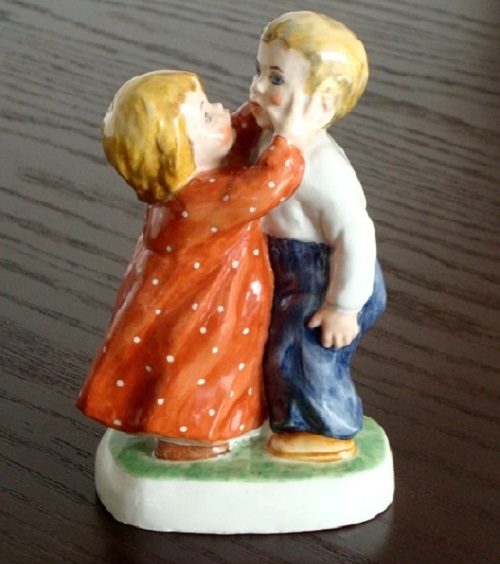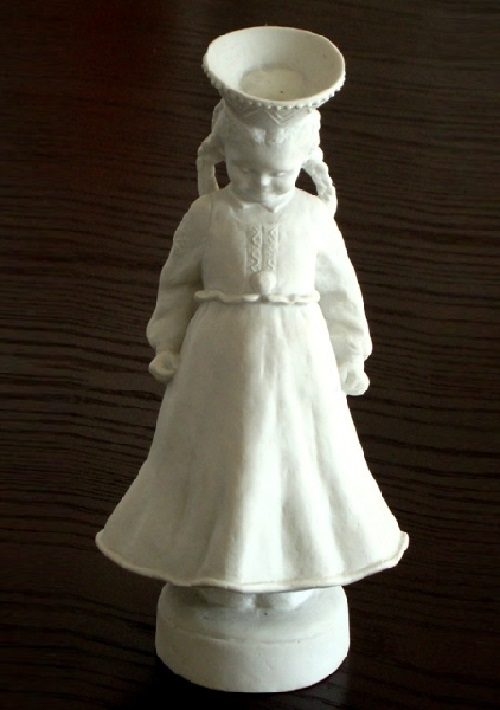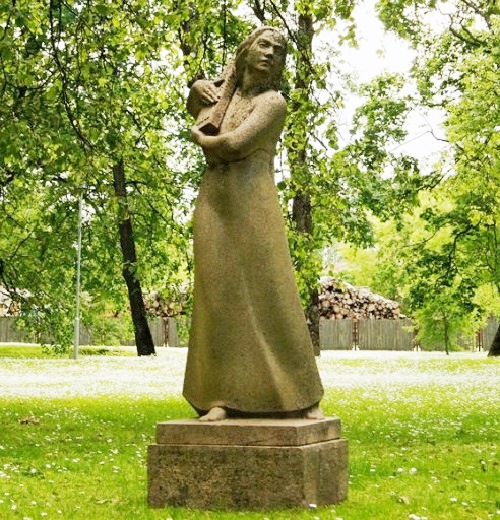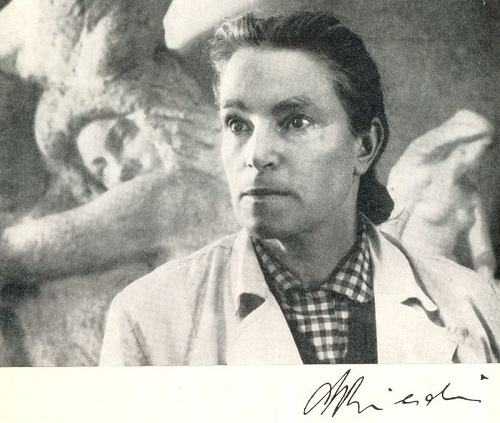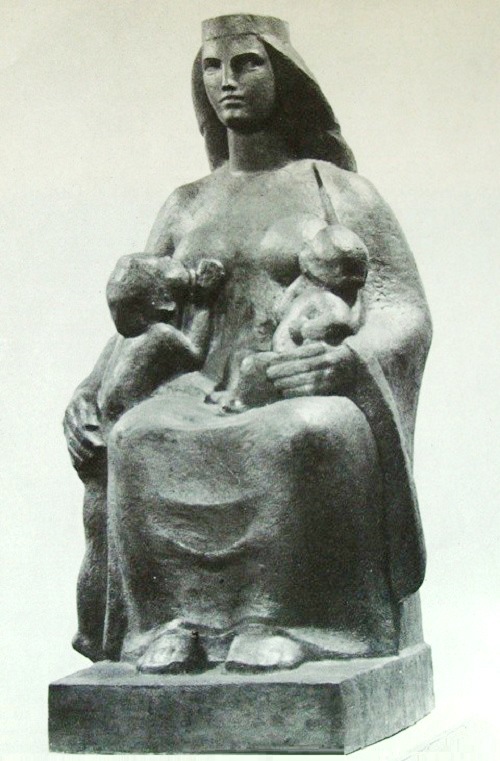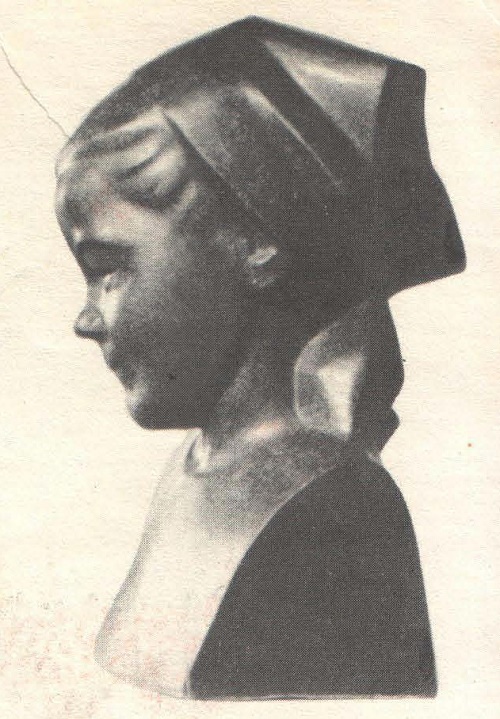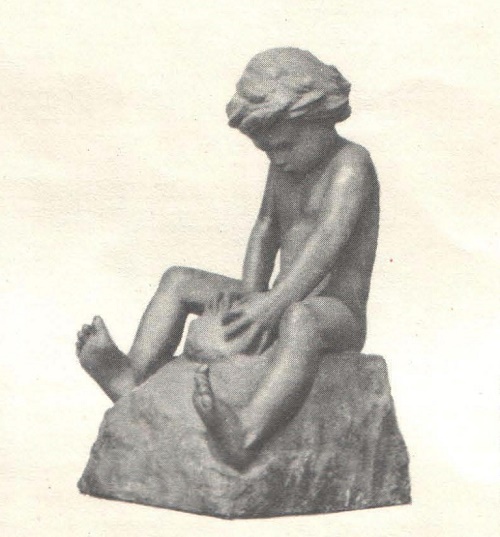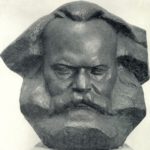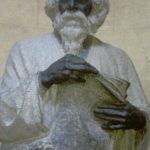Soviet sculptor Alexandra Briedis
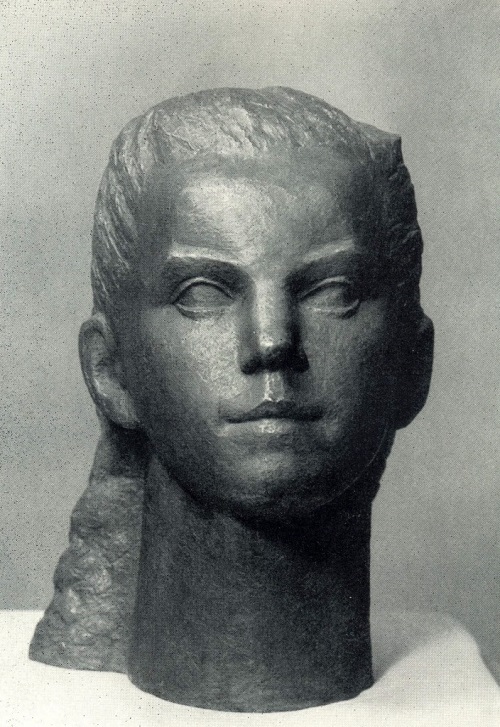
Soviet sculptor Alexandra Briedis (July 25, 1901 – November 14, 1992). Portrait of schoolgirl Mary. 1970. Gypsum
Soviet sculptor Alexandra Briedis (Alexandra Yanovna Briede, nee Kalninya, 25 July 1901 — 14 November 1992) – People’s Artist of the Latvian SSR (1955), Corresponding Member of the USSR Academy of Arts (1958). Alexandra studied at the Academy of Arts in Riga (1923-31) at the workshop of K. Ronchevsky. She is the author of statues, tombstones, portraits, genre scenes, works of fine porcelain sculpture. Her works: “The young sculptor” (bronze, 1947), “The World” (marble, 1960), “Rain” (granite, 1969) – all were stored at the Art Museum of the Latvian SSR, Riga; “May there always be sunshine” (granite, 1963), “Antsite – Collective Farm Girl” (bronze, 1965), “My land” (aluminum 1967), “Lenin” (granite, 1969). She was awarded the Order of Lenin and the Order of Merit.
Alexandra Yanovna Briede entered the Academy of Arts Riga shortly after its foundation – in 1923. While still a student, she attracted the attention of connoisseurs of art, performing a sculptural sketch of a boy immersed in reading a book, as well as sculpture of a beggar woman with a girl.
Upon graduation from the Academy (1931) Briede began to take an active part in the artistic life of Latvia. Her works have begun increasingly to appear at the Riga exhibitions. At that time she made bronze sculptures “Smith” and “pupil”, bas-reliefs on the theme of children’s lives, and “Sound” (1937) – sculptural tombstone on the grave of the famous Latvian musicologist Professor Peteris Pauls Jozuus (1873—1937). Among the best works created by Briede – portrait of sculptor Jan Briede (1937) and embodied in granite composition “Mother” (1938).
“Blue Bird” by Alexandra Briede is funny and touching, full of a keen sense of the truth of life, with great skill, which has always distinguished the work of the Latvian artist. Blue bird of happiness – in the hands of a girl, as in the hands of all the children of the Soviet country.
When, in 1940 Latvia restored Soviet power, Briede became to determine the content and direction of her art tasks of socialist transformation of the life of the republic. “Border guard” sculpture was the first step in the development of Soviet themes. At the same time she began to prepare for decade of Latvian art in Moscow. However, all her plans were interrupted by the WWII.
True, the most interesting work has come back only after passed a grim time of the Nazi occupation. Already in 1945, the sculpture “In the Forest” by Briede was exhibited at exhibition in Riga Museum of Fine Arts. The second post-war work – “Bather” – received accolades at the All-Union competition in Moscow. For the monument to Janis Rainis created by Briede and her husband they were awarded the Republican Prize.
Ten years later, in 1956-1957, already widowed, Briede again took part in the competition for the monument to the national poet of Latvia, and again her work was awarded the prize. Since 1951, the leading theme of Soviet sculptor Alexandra Briedis has become the image of Lenin. Her statue of Lenin was established in 1956 in the Latvian SSR Supreme Soviet building.
Soviet sculptor Alexandra Briedis
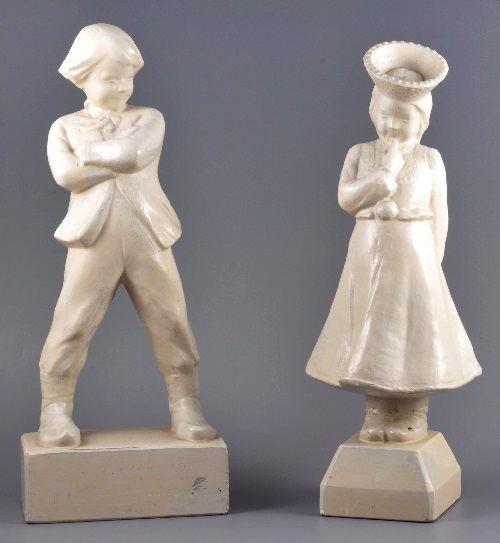
Children in national costumes, plaster, Riga (Latvia), USSR, author’s work by Aleksandra Briede 1950
In parallel with monumental sculpture, Briede works in the field of easel-portrait (a portrait of the writer Andrejs Upits, “Antsite – helper”, 1960 and others). A great place in the work of the sculptor takes child-related theme. With the artistic language her works told about the happy life of kids; there is softness, sometimes – lyrical (“Little Peter” 1947, Bronze; “Young Sculptor”, 1947; “Girl with a Doll”, 1949; “Poultry farmers”, “Petya”, 1956; “Enthusiasts”, 1957; “The mountain”, 1960; “The World”, 1960, etc.).
Briede’s small sculptural plastics show her as an original master. Her children’s composition in porcelain and earthenware are very decorative, she feels well material that can subdue the whole piece.
Sources:
“Art calendar 100 memorable dates”, Moscow, 1971;
Illustrated album “The Youth of the country”.
Publisher “Soviet artist”, Moscow, 1978
culture-art.ru

